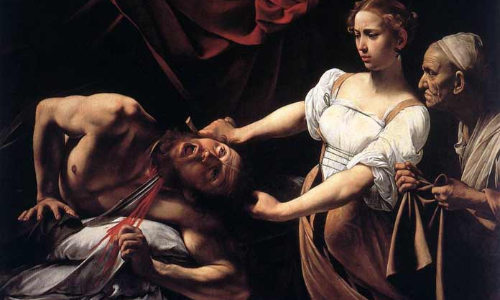Live
- TS BIE announces payment due dates for pvt candidates
- Dr Lankapalli Bullayya inks pact with L&T
- North Andhra will be developed on all fronts
- HMWSSB MD reviews water supply
- Blunders of Nehruvian era still haunting the country: Dr Jaishankar
- Congress leaders consider themselves above Lord Ram: PM
- Extreme weather may pose risk to inflation: RBI
- TDP candidate assures to provide concession on power tariff
- BS Maqbool Urges Voters to Support Good Governance in Election Campaign
- Chief Minister makes YSRCP’s stance clear on Vizag Steel Plant
Just In

At a press conference at Colnaghi, Thursday, art appraiser Eric Turquin announced that a painting discovered in 2014 is a lost work of the Italian master Caravaggio Judith and Holofernes, believed to have been painted in 1607When discovered in the attic of a house in Toulouse, the painting was coated in dust and stained by a water look
At a press conference at Colnaghi, Thursday, art appraiser Eric Turquin announced that a painting discovered in 2014 is a lost work of the Italian master Caravaggio: ‘Judith and Holofernes,’ believed to have been painted in 1607.
When discovered in the attic of a house in Toulouse, the painting was coated in dust and stained by a water look. It took five years for experts to come to a conclusion regarding the five feet tall and six feet wide work of art. On June 27, Labarbe will auction it in Toulouse, where it is expected to sell for up to 150 million Euros (USD 171 million), reported CNN.
“This is the greatest painting I've ever found,” said Turquin, adding, “It's very violent. It's almost unbearable. But he's an artist who embodies the text – he makes the text living.” The text in question is the Book of Judith, found in Roman Catholic and Eastern Orthodox versions of the Old Testament.
According to the Old Testament, Judith was a widow from the city of Bethulia, under siege by the army of Assyrian general Holofernes. To save her city, she seduced the general in his tent before beheading him, as Caravaggio's painting viscerally depicts.
The art appraiser said that the painting has a complicated history. Created after Caravaggio fled Rome, accused of murder, it reflects the marked shift in style that the artist developed while in exile in Naples.
"Caravaggio was becoming darker, more sombre towards the end of his life. He was getting more extreme," Turquin said.
Four documents support its provenance: two 1607 letters to the Duke of Mantua, describing the painting; the 1617 will of art dealer and painter Louis Finson; and an inventory of the estate of Abraham Vinck, Finson's associate, carried out in Antwerp in 1619.
According to history, the fate of the painting became murkier after 1619, though according to the Colnaghi gallery, it could have been displayed in Antwerp in 1689. The fate of the painting after 1689 remains unknown.
Before the Toulouse discovery, only a meticulous copy of ‘Judith and Holofernes’, painted by Louis Finson, indicated the existence of the original.
While there were doubts whether the Toulouse painting is the original, two things proved its authenticity. The first, its vividness, “A copy is dry, and lacking energy,” he explained and there is also the presence of traces of alterations, under the paint.

© 2024 Hyderabad Media House Limited/The Hans India. All rights reserved. Powered by hocalwire.com







